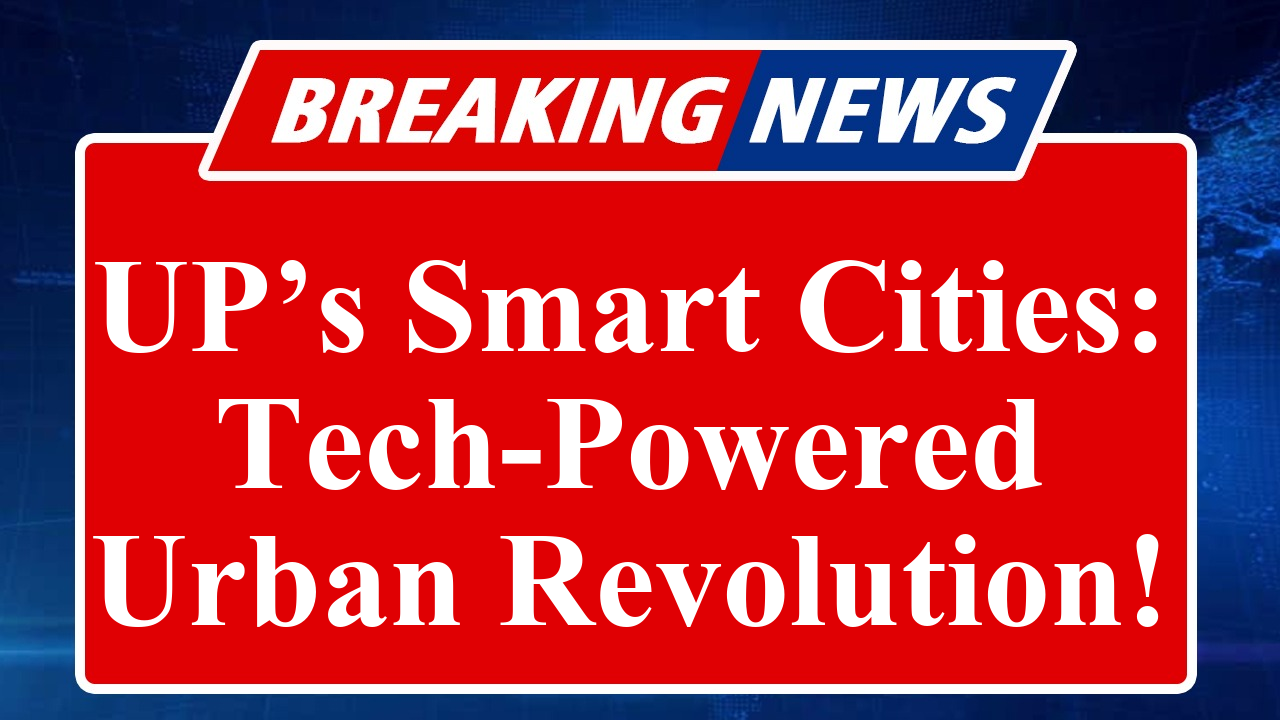“Uttar Pradesh is transforming its urban landscape through the Smart Cities Mission, integrating advanced technology to enhance infrastructure, governance, and sustainability. With 17 smart cities, including 10 central and 7 state-designated, UP is leveraging ICT for efficient urban planning. Key initiatives include ICCCs, smart traffic systems, and sustainable infrastructure, driving economic growth and improving quality of life.”
Uttar Pradesh’s Smart Cities: A Technological Leap in Urban Development
Uttar Pradesh, India’s most populous state, is at the forefront of urban transformation under the Smart Cities Mission, launched by the Government of India in June 2015. The state has embraced this initiative to modernize its urban centers, integrating cutting-edge technology to address the challenges of rapid urbanization. With 17 cities designated as smart cities—10 under the central scheme (Agra, Aligarh, Bareilly, Jhansi, Kanpur, Lucknow, Moradabad, Prayagraj, Saharanpur, and Varanasi) and 7 under the state scheme (Ayodhya, Firozabad, Ghaziabad, Gorakhpur, Mathura, Meerut, and Shahjahanpur)—UP is setting a benchmark for sustainable urban development.
The Smart Cities Mission aims to enhance the quality of life through technology-driven solutions, focusing on core infrastructure, efficient governance, and environmental sustainability. In UP, the mission has led to significant advancements. Integrated Command and Control Centres (ICCCs) are operational in all 10 central smart cities, serving as nerve centers for real-time monitoring of traffic, air quality, and waste management. For instance, Lucknow’s ICCC enables seamless urban management, while Varanasi’s ICCC played a pivotal role during the 2019 Kumbh Mela and the COVID-19 pandemic, ensuring public safety and efficient resource allocation.
Technology integration is a cornerstone of UP’s smart cities. Intelligent Traffic Management Systems (ITMS) have been deployed across cities like Kanpur and Agra, incorporating smart traffic signals and automatic number plate recognition to reduce congestion. Varanasi has introduced GPS-enabled buses and e-rickshaws for last-mile connectivity, enhancing urban mobility. Additionally, over 84,000 CCTV cameras have been installed statewide for surveillance and crime prevention, bolstering public safety.
Sustainable infrastructure is another focus area. Cities like Gorakhpur are developing green spaces and eco-friendly zones to combat pollution, while Moradabad has implemented smart waste management systems, including door-to-door garbage collection and smart bins. Prayagraj is upgrading its water supply with SCADA-monitored pipelines to ensure efficient water usage and leak detection. Energy-efficient initiatives, such as LED street lighting and solar energy projects, are reducing the carbon footprint in cities like Bareilly and Saharanpur.
The state’s ambitious plan to transform 57 additional municipalities into smart cities, announced in April 2025, underscores its commitment to inclusive urban growth. With a budget of ₹40,000 crore and initial funding of ₹145 crore, these municipalities will feature AI-driven civic services, chatbot-based citizen interaction, and digital traffic management. Chief Minister Yogi Adityanath has emphasized making UP a model for urban development, with projects like Ayodhya’s transformation into a global pilgrimage city driving tourism and infrastructure growth.
Despite these achievements, challenges persist. Delays in land acquisition, particularly in dense areas like Kanpur, and funding constraints have slowed progress in some cities. Coordination gaps between departments and limited public awareness have also posed hurdles. However, the state’s focus on capacity-building workshops and citizen engagement through e-governance platforms is addressing these issues. For example, Lucknow and Prayagraj have launched initiatives to involve resident welfare associations in planning and feedback.
Uttar Pradesh’s smart cities are also boosting economic growth. Moradabad’s brass handicraft industry is benefiting from improved digital governance, attracting real estate investments. Bareilly, a key commercial hub, is seeing growth in its real estate sector due to enhanced connectivity and public services. The mission’s emphasis on mixed land use and walkable neighborhoods is fostering inclusive development, ensuring benefits reach diverse populations.
As of July 2025, UP’s 10 central smart cities have utilized ₹4,876 crore of the ₹4,900 crore central financial assistance, completing 343 projects worth ₹4,757 crore and progressing on 199 others. The state’s third-place ranking at the India Smart City Awards 2023, with Varanasi topping the North Zone, highlights its success. Agra’s cleanliness initiatives and Kanpur’s sports infrastructure modernization further showcase the mission’s impact.
The Smart Cities Mission in UP is not just about technological upgrades but also about preserving cultural heritage. Varanasi’s riverfront beautification and Agra’s heritage conservation efforts balance tradition with modernity. With ongoing investments and a focus on citizen-centric innovation, Uttar Pradesh is poised to lead India’s smart urbanization drive, creating sustainable, inclusive, and vibrant urban ecosystems.
Disclaimer: This article is based on information sourced from government websites, official releases, and reports from credible news outlets such as The Indian Express, Economic Times, and Drishti IAS, reflecting developments up to August 2025. Data accuracy depends on the reliability of these sources. For real-time updates, refer to official Smart Cities Mission portals or verified news platforms.

